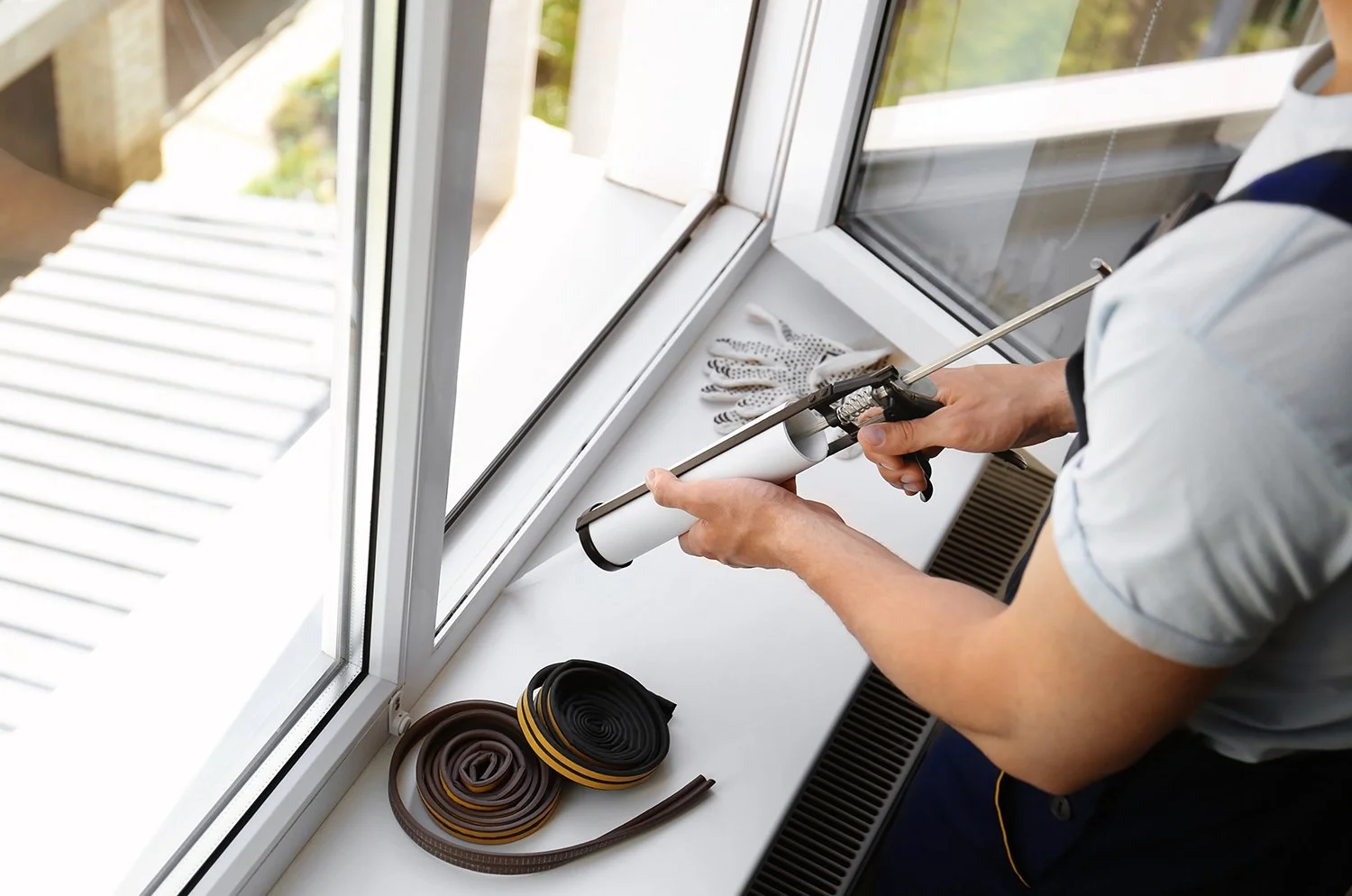New Homeowner's Survival Guide: Your Essential Boulder Move-In Checklist

Congratulations! You've just bought a home in one of America's most desirable—and most expensive—mountain towns. Your friends are already planning visits to experience those legendary Flatiron sunrises from your deck, and you're excited to start this new chapter. But somewhere between the final walkthrough and receiving your first utility bill, you realize there might be a few Boulder-specific details your realtor didn't mention.
Welcome to homeownership in Boulder, where the views are spectacular, the cost of living makes your wallet weep, and Mother Nature has a personal vendetta against anyone who doesn't properly winterize their pipes. But don't panic—thousands of Boulderites have successfully navigated this transition before you, and with the right game plan, you'll be hosting backyard barbecues in no time.
This isn't your typical generic homeowner checklist filled with obvious advice like "get homeowner's insurance." This is your Boulder-specific survival guide, packed with local insider knowledge, altitude-adjusted wisdom, and the kind of practical advice that will save you from becoming one of those cautionary tales shared at neighborhood potlucks.
The Smart Solution: Why Boulder Homeowners Choose Concierge Services
Before diving into the detailed checklist, it's worth considering a different approach entirely. Many successful Boulder homeowners have discovered that the complexity of mountain living, combined with busy professional lives and the desire to actually enjoy their outdoor paradise, makes a home concierge service not just convenient—but essential.
A home concierge service like Willow transforms the overwhelming world of Boulder homeownership into a managed, proactive experience. Instead of frantically googling "Boulder HVAC contractors" during a January cold snap or trying to coordinate multiple service providers for seasonal maintenance, you have a dedicated partner who knows your home, understands Boulder's unique challenges, and maintains relationships with trusted local contractors.
The concierge model provides continuity that individual contractors can't match. Your home advisor gets to know your property's quirks—from that basement corner that always gets damp in spring to the HVAC system that needs specific attention at altitude. They track your home's maintenance history, anticipate seasonal home maintenance needs, and catch small issues before they become expensive emergencies.
For Boulder homeowners, this approach offers particular advantages. Your concierge understands local regulations, can navigate Boulder's permit processes, and knows which contractors truly understand high-altitude construction challenges versus those who might leave you with costly mistakes.
Whether you choose a concierge service or tackle Boulder homeownership independently, the following comprehensive checklist will ensure you don't miss any critical steps in establishing your mountain home successfully.
The Boulder Difference: Why Generic Checklists Don't Cut It
Boulder isn't just another city—it's a unique ecosystem of environmental challenges, municipal quirks, and lifestyle expectations that can blindside unprepared homeowners. At 5,430 feet above sea level, your new home faces intense UV radiation that will fade your deck furniture faster than you can say "fourteener." Our dramatic temperature swings can crack foundations, burst pipes, and test the limits of any HVAC system not designed for mountain living.
Then there's Boulder's municipal government, which takes a thorough approach to community planning and environmental protection, with detailed regulations covering everything from wildlife management to historic district guidelines. What might seem like straightforward home improvements often require additional permits and consultations to ensure compliance with local standards
The social landscape presents its own challenges. Boulder residents have strong opinions about everything from organic gardening to outdoor recreation etiquette. Your choice of lawn care products, holiday decorations, and even your dog's breed might become neighborhood talking points. Understanding these unwritten rules can mean the difference between becoming a beloved community member and that neighbor everyone whispers about at the farmers market.
Weather patterns here defy logic and preparation. You might wake up to bluebird skies and 70°F temperatures, only to find yourself in a classic Colorado hail season downpour that can turn your car into a golf ball in under five minutes. Colorado wildfire season brings smoke, evacuation concerns, and insurance complications that most homeowner guides never mention.
New to Boulder homeownership? Willow can help.
Contact Willow’s home concierge team today to learn more about how its preventative home maintenance plans can help protect your home and save money in the long run.
30 Days Before Moving: Foundation Setting
Your Boulder homeownership journey begins well before you get those keys. This crucial preparation period sets the stage for a smooth transition and helps you avoid the panicked scrambling that turns moving day into a disaster.
Utility Detective Work
Boulder's utility landscape is more complex than most cities, with multiple providers and specific local requirements. Xcel Energy handles electricity and natural gas, but you'll need to coordinate carefully with their scheduling system, which can be booked solid during peak moving seasons. Schedule your connection at least two weeks in advance, and don't be surprised if they can't accommodate your exact preferred date.
For water and sewer services, you'll work directly with the City of Boulder Utilities department. They require a substantial deposit for new accounts and have specific requirements for final meter readings and account transfers. If you're moving into a home with a smart meter, download the Boulder utilities app to monitor usage and catch potential leaks early.
Internet service in Boulder ranges from basic municipal broadband to high-speed fiber, depending on your neighborhood. Comcast Xfinity dominates most areas, but newer developments might have access to CenturyLink fiber or municipal options. Research your specific address thoroughly, as service quality varies dramatically between neighborhoods, and some areas still struggle with reliable high-speed options.
Waste management through Western Disposal requires separate scheduling and has specific requirements for bin placement, recycling protocols, and bulk item pickup. Boulder takes its environmental responsibility seriously—incorrect recycling can result in warnings and eventual service suspension.
Insurance Navigation
Boulder's insurance landscape is increasingly complex due to wildfire risk, hailstorm frequency, and flood potential. Standard homeowner's policies often exclude or limit coverage for these specific regional risks, requiring additional riders or specialty coverage.
Wildfire insurance has become essential for many Boulder neighborhoods, particularly those in the wildland-urban interface. Recent fires have caused some insurers to stop writing new policies or dramatically increase premiums. Start shopping early and be prepared for sticker shock—annual premiums of $3,000-5,000 aren't uncommon for comprehensive coverage.
Hail damage coverage deserves special attention, as Boulder County leads Colorado in hail claim frequency. Ensure your policy includes full replacement cost coverage for roofing and siding, and understand your deductible structure. Some policies use percentage-based deductibles for hail claims, which can result in significant out-of-pocket costs.
Flood insurance through NFIP requires a 30-day waiting period, so don't delay this purchase. Many Boulder properties are in designated flood zones due to creek proximity or historical flooding patterns. Even if you're not in a mapped flood zone, consider coverage—Boulder's intense summer thunderstorms can cause flash flooding in unexpected areas.
Boulder Building Code Research
Boulder's building codes are notably strict and frequently updated, with requirements that exceed state standards in many areas. If you're planning any modifications or improvements, research requirements early to avoid costly surprises.
Historic district properties face additional restrictions on exterior modifications, window replacements, and even color choices. The review process can take months and requires detailed documentation of proposed changes. Even seemingly minor updates like replacing a front door might require approval.
Energy efficiency requirements in Boulder are among the nation's most stringent, with mandatory energy audits for many property transfers and specific requirements for renovations. The SmartRegs program requires energy efficiency improvements for properties over certain thresholds, potentially adding thousands to your renovation costs.
Wildfire mitigation requirements affect many Boulder properties, with mandatory defensible space creation and specific requirements for roofing materials, vegetation management, and structural modifications. These aren't suggestions—they're enforceable requirements that can affect insurance coverage and property values.
The First Week: Critical Setup Phase
Moving week in Boulder requires strategic planning and local knowledge to navigate successfully. From dealing with narrow mountain roads to coordinating multiple service appointments, this week sets the tone for your entire Boulder experience.
Moving Day Mountain Style
Boulder's geography creates unique moving challenges that coastal and flatland movers don't anticipate. Many neighborhoods feature narrow, winding streets that large moving trucks can't navigate. Research your route carefully and inform your moving company about any restrictions—some areas require smaller trucks or multiple trips.
Altitude affects both humans and equipment during moving day. Professional movers from sea level often struggle with the elevation, and hydraulic equipment may operate differently. Ensure your moving crew is prepared with extra water and realistic timeline expectations.
Weather can change rapidly in Boulder, turning a perfect moving day into a nightmare within hours. Summer afternoon thunderstorms are nearly guaranteed, and spring moves risk late-season snowstorms. Have contingency plans for weather delays and protect electronics and furniture from sudden downpours.
Parking permits may be required for moving trucks in some Boulder neighborhoods, particularly downtown and university areas. Contact the city in advance to secure permits and avoid parking tickets that can quickly exceed $100.
Lock and Security Upgrades
Boulder's property crime rates vary significantly by neighborhood, but regardless of location, updating your security should be an immediate priority. Previous owners may have distributed keys to neighbors, contractors, housekeepers, and dog walkers—you have no way of knowing how many copies exist.
Consider upgrading to smart locks, which are increasingly popular in Boulder's tech-savvy community. These systems allow temporary access codes for service providers and delivery personnel while maintaining security logs. Choose systems that function reliably in Boulder's temperature extremes and aren't dependent on internet connectivity during outages.
Security system options range from basic monitored alarms to comprehensive smart home systems. Many Boulder residents prefer systems that integrate with home automation, allowing remote monitoring of heating systems, water leaks, and other issues common to vacant mountain properties.
Professional Home Assessment
Even if you had a pre-purchase inspection, a post-move assessment by a Boulder-specific home maintenance professional provides current insights and helps establish maintenance priorities. Look for companies familiar with Boulder's unique challenges—altitude effects on HVAC systems, UV damage patterns, and regional pest issues.
This assessment should include a comprehensive review of winterization needs, as Boulder's heating season can start as early as October and last through April. Identify potential freeze points, insulation deficiencies, and heating system capacity issues before you're dealing with emergency repairs during a blizzard.
Wildfire preparedness assessment has become essential for many Boulder properties. Professional evaluation can identify defensible space needs, structural vulnerabilities, and evacuation planning considerations that affect both safety and insurance coverage.
First Month: System Integration and Community Connection
Your first month in Boulder is about establishing routines, understanding your home's systems, and beginning to integrate into the community. This period involves deeper exploration of your property and neighborhood while addressing issues that emerge during initial occupancy.
HVAC System Optimization
Boulder's dramatic daily temperature swings—often 40°F or more—challenge even well-designed HVAC systems. Your first month should include careful observation of how your system responds to these conditions and identification of any efficiency issues.
High altitude affects heating and cooling equipment performance in ways that sea-level technicians might not understand. Reduced air density can affect combustion efficiency, while intense UV exposure degrades outdoor equipment faster than in other climates. Schedule professional service with technicians experienced in high-altitude systems.
Indoor air quality becomes crucial during Boulder's frequent poor air quality days caused by wildfire smoke, winter inversions, and ozone pollution. Your HVAC system's filtration capabilities might need upgrading to handle these regional challenges effectively.
Water System Understanding
Boulder's municipal water is generally excellent, but understanding your home's specific water systems prevents costly surprises. Learn the locations of all shutoff valves—main line, individual fixtures, and irrigation systems. Boulder's freeze-thaw cycles can cause pipe failures with little warning.
Water pressure variations are common in Boulder's hilly terrain, and some neighborhoods experience pressure drops during peak usage periods. Identify any pressure issues early and understand whether they're property-specific or neighborhood-wide problems.
If your property includes irrigation systems, understand the setup thoroughly before the next growing season. Boulder's water restrictions are strictly enforced, with specific watering days, times, and methods. Violations result in escalating fines that can reach hundreds of dollars.
Electrical System Familiarization
Boulder's frequent thunderstorms create power quality issues that can damage sensitive electronics and appliances. Whole-house surge protection is highly recommended and may be required for some insurance policies.
Learn your electrical panel layout and test all GFCI outlets and circuit breakers. Boulder's older neighborhoods often have electrical systems that don't meet current capacity demands, particularly for electric vehicle charging or home office setups.
Solar energy is popular in Boulder due to excellent sun exposure and favorable net metering policies. If your home includes solar panels, understand the system operation, monitoring, and maintenance requirements. Even without current solar installation, research your property's solar potential for future consideration.
Local Service Provider Network
Establishing relationships with reliable local service providers is crucial for Boulder homeownership success. The city's unique challenges require contractors and services familiar with local conditions, regulations, and seasonal demands.
Research HVAC contractors with high-altitude experience, plumbers familiar with freeze protection, and electricians experienced with Boulder's electrical codes and solar integration requirements. Many Front Range contractors lack mountain-specific knowledge that can be costly for homeowners.
Landscaping and lawn care providers should understand Boulder's water restrictions, native plant requirements, and wildfire mitigation needs. The right landscaping choices can significantly affect your property's maintenance requirements and insurance costs.
New to Boulder homeownership? Willow can help.
Contact Willow’s home concierge team today to learn more about the benefits of home concierge service, including priority relationships with Boulder’s best contractors.
Seasonal Preparedness: Boulder's Four-Season Challenge
Boulder's seasonal extremes require proactive home maintenance and specific knowledge to prevent costly damage and ensure year-round comfort. Understanding these patterns and preparing accordingly separates successful Boulder homeowners from those constantly dealing with preventable emergencies.
Spring Awakening and Assessment
Boulder springs bring rapid snowmelt, freeze-thaw cycles, and dramatic weather swings that test every home system. This season requires comprehensive assessment of winter damage and preparation for the active season ahead.
Roof and gutter inspection becomes critical after Boulder's heavy snow loads and ice dam potential. Look for loose shingles, damaged flashing, and gutter separation that could cause water damage during spring storms. Professional inspection is recommended, as Boulder's intense UV exposure can mask damage that becomes critical during weather events.
Foundation and drainage assessment identifies winter damage and prepares for spring runoff challenges. Boulder's clay soils expand and contract significantly with moisture changes, potentially affecting foundation stability and basement moisture levels.
Landscape recovery from winter involves more than basic cleanup in Boulder's challenging environment. Salt damage from winter road treatments, vole damage under snow cover, and winter desiccation from intense sun and wind require specific treatment approaches.
Summer Intensity Management
Boulder summers bring extreme UV exposure, afternoon thunderstorms, and potential wildfire threats that require ongoing vigilance and preparation. Your home's cooling efficiency and weather resistance face their biggest tests during this season.
UV protection becomes critical for all exterior surfaces, from siding and roofing to outdoor furniture and vehicle finishes. Boulder's high-altitude sun exposure can cause material degradation equivalent to several years of sea-level exposure in a single season.
Thunderstorm preparation involves understanding Boulder's unique weather patterns—intense, localized storms that can bring hail, damaging winds, and flash flooding. Many Boulder neighborhoods experience regular power outages during storm season, making backup power and surge protection essential.
Wildfire awareness and preparation have become year-round concerns, but summer brings the highest risk periods. Understand your evacuation zone, maintain defensible space, and monitor air quality during fire season. Many Boulder residents invest in air filtration systems to handle smoke exposure.
Fall Preparation and Winterization
Boulder's fall season offers the best opportunity for winter preparation, but the window is often shorter than newcomers expect. Early snowstorms can arrive in October, making proactive preparation essential.
Heating system preparation should begin in early fall, before the first cold snap reveals problems. Professional service, filter replacement, and efficiency testing ensure reliable operation during Boulder's long heating season. Many residents also invest in backup heating sources for power outage situations.
Pipe freeze protection goes beyond basic insulation in Boulder's extreme cold. Identify vulnerable areas, ensure adequate heat circulation, and understand emergency procedures for freeze events. Many Boulder homes require additional protection beyond standard recommendations.
Landscape and irrigation winterization prevents costly freeze damage and ensures spring recovery. Boulder's water restrictions often continue through winter, making efficient irrigation system shutdown and protection crucial for both compliance and system longevity.
Winter Survival and Maintenance
Boulder winters test every home system and require ongoing attention to prevent problems from becoming disasters. Understanding seasonal maintenance needs and emergency procedures separates prepared homeowners from those facing costly winter emergencies.
Snow removal and ice management involve more than basic shoveling in Boulder's variable conditions. Understand roof snow load limits, ice dam prevention, and safe removal techniques for Boulder's heavy, wet snow conditions.
Heating system monitoring becomes critical during extended cold periods when systems run continuously. Understand your system's capacity limits, emergency procedures, and backup heating options for power outage situations.
Indoor air quality management addresses Boulder's winter challenges—dry air from heating systems, potential carbon monoxide issues, and poor outdoor air quality during winter inversions. Many residents invest in humidification and air purification systems.
New to Boulder homeownership? Willow can help.
Contact Willow’s home concierge team today to learn more about how its subscription maintenance plans can satisfy all of your seasonal home maintenance needs.
Boulder-Specific Regulations and Compliance
Boulder's complex regulatory environment—from energy efficiency mandates to historic preservation requirements—can overwhelm new homeowners. Building codes exceed state standards, water restrictions are strictly enforced, and environmental regulations affect everything from landscaping to lighting installation.
A home concierge service provides expert guidance through these regulatory complexities, connecting you with specialists who understand Boulder's unique requirements. Your concierge advises on permit needs, recommends contractors experienced with local codes, and helps you understand compliance timelines before projects begin. Rather than navigating SmartRegs requirements or historic district guidelines alone, you have an experienced advisor who knows which professionals to consult and when to involve them, ensuring your projects proceed smoothly and legally.
Emergency Preparedness: Boulder's Unique Risks
Boulder's location creates specific risks—wildfire evacuations, flash flooding, severe hailstorms, and frequent power outages. Emergency preparedness isn't optional here; it's essential for safety and property protection. A home concierge service can help you create a comprehensive emergency plan tailored to your property and neighborhood.
Financial Planning and Cost Management
Boulder's challenging environment creates higher maintenance costs than most locations. UV exposure, temperature extremes, and weather events accelerate wear on home systems, while specialized service requirements reflect the area's high cost of living.
A home concierge service provides predictable maintenance budgeting through proactive care and vendor relationship management. They optimize energy efficiency investments, coordinate insurance-saving improvements like defensible space creation, and prevent costly emergency repairs through systematic monitoring and maintenance.
Community Integration and Boulder Lifestyle
Boulder's unique culture values environmental consciousness and outdoor recreation, with strong neighborhood expectations about property maintenance and community participation. Professional networking often blends with recreational activities, creating opportunities for both social connections and practical support.
A home concierge service helps you integrate successfully by ensuring your property meets community standards while you focus on building relationships and enjoying Boulder's lifestyle. They handle the maintenance details that matter to neighbors while connecting you with trusted local resources and service providers.
Technology Integration and Smart Home Considerations
Boulder's tech-savvy population and environmental challenges create excellent opportunities for smart home technology—from climate monitoring during extreme temperature swings to security systems that distinguish between wildlife and actual threats.
A home concierge service designs and manages smart home integration tailored to Boulder's unique conditions. They optimize energy management for solar integration, coordinate air quality monitoring during wildfire season, and ensure technology systems function reliably during the frequent travel that comes with mountain living.
This approach maintains the informational value while positioning home concierge services as the practical solution to Boulder's homeownership complexities.
New to Boulder homeownership? Willow can help.
Contact Willow’s home concierge team today to learn more about how its subscription maintenance plans can satisfy all of your home maintenance needs.
Home Concierge for Luxury Home Property Management
At Willow, we take a proactive approach to home care, ensuring your luxury home remains in pristine condition year-round. From routine maintenance and seasonal upkeep to coordinating trusted vendors for repairs and upgrades, we handle it all with a high-touch, concierge-style experience tailored to your needs.
Let us take home management off your plate. Contact Willow today to learn how our services can help you protect, maintain, and enhance your home with ease.
Willow is a luxury home concierge service based in Boulder, Colorado. We care about your home and giving you back your time to do the things you care about most.
How it Works





